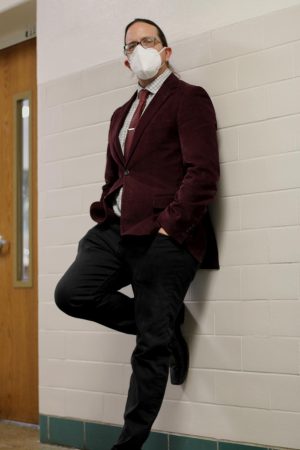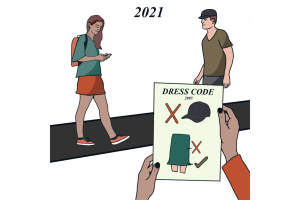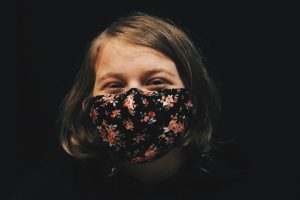In-depth: Clothing ≠ gender
In the 10th century Persian men used to wear high heels to keep their shoes in their stirrups, and in the 1920s pink was the perfect color for boys, as a softer version of the masculine color red. Harry Styles fought against gender norms with his iconic Vogue cover shoot look, where he wore a dress. The fight to separate gender from clothing has been going on for years. It even plays out in our own KHS hallways, because for some students at KHS, clothing doesn’t equal gender.
Ezra Birman
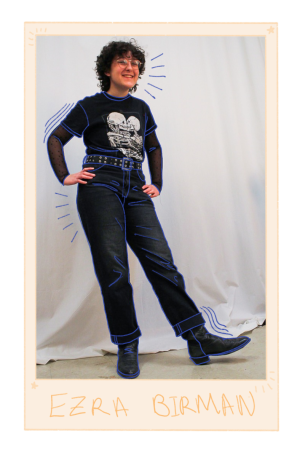
Art by Ally Hudson (Coco LeGrand)
A gender-neutral bathroom at KHS, a pair of scissors, a GSA meeting and a couple of minutes before an orthodontist appointment was all Ezra Birman, junior, needed to cut off half his hair.
Birman realized he was transgender before going into high school, but he didn’t come out until freshman year, which is when he decided to cut his hair. He said fashion is important because it is a form of self-expression, and he has always stood out because of it.
“I’ve never really liked conforming to anything,” Birman said. “I didn’t conform to gender roles as a girl, and I don’t conform to gender roles as a boy. So it’s never really been an option for me to conform.”
Birman has described his fashion as pastel and preppy, or “Picture of Dorian Gray.” But really, he said, he just enjoys wearing cool clothes.
“As a trans guy, I thought [my style] was going to be more masculine, but then I realized that no matter how I dress, I’m going to be read as female,” Birman said. “Why not have fun with the presentation? If nobody’s going to read me as a guy anyway, I’d rather be read as just someone wearing cool clothes.”
Birman said he has been wearing unique clothes his whole life. His dad introduced him to Goodwill at an early age, where he would buy random items and try to incorporate them into his elementary school uniform. While defying the dress code with black turtlenecks and leggings might not be revolutionary, Birman said, he enjoyed it.
“[Fashion is] a means to express myself,” Birman said. “I can’t imagine a world where I didn’t dress like this.”
Seamus Layer
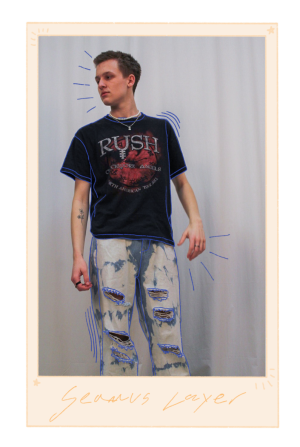
A sparkly mesh tank top, booty shorts, silver metallic go-go boots and of course a cowboy hat — a Kacey Musgraves-inspired outfit. That was the outfit that Seamus Layer, senior, wore to the Senior Western dance, Sept. 25, 2021.
The outfit was a big step in Layer’s fashion evolution. He said it was his most out-there look to date.
“I’ve never done anything like that before,” Layer said. “[The outfit] wasn’t even something I thought of as, ‘Oh, I’m being provocative,’ I just thought, ‘Oh, I’m doing this outfit inspired by a musician I like.’”
Layer said he uses fashion as a tool to show people who he is. He believes fashion is about being yourself, and as he has grown more confident, so has his fashion sense.
“When I was overweight, I used fashion as a way to hide who I was,” Layer said. “And now I use [fashion] as a way to express who I am.”
It can take time to build up the courage to wear a more unique outfit, at least, that was the case for Layer. But, he said the people judging you for what you wear are even more judgmental of themselves, so just wear what you want to wear.
“My style is my style,” Layer said. “I don’t like to use one word. I don’t like to use preppy or masculine or feminine or street. I like to just like what I like, and put on what I want to put on.”
Melly Sands
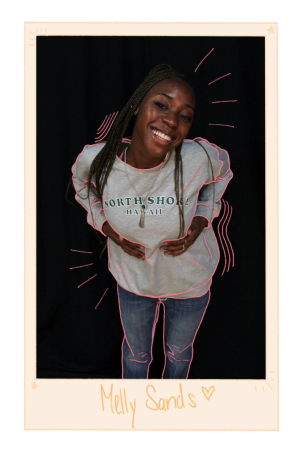
She likes to wear blacks, grays and less vibrant colors. Her outfits usually consist of jeans or baggy pants, hoodies and beanies. Rarely will you find a drop of color in her outfit.
Melly Sands, junior, said when she was a kid, she didn’t like to wear frilly dresses and skirts because she was friends with a lot of guys who judged her for wearing feminine clothing. She still dresses less feminine now because it’s what makes her most comfortable, not a ploy to fit in.
“As I’ve gotten older, I’ve [realized] that some days I want to dress a little bit more feminine, I want to wear a crop top, or I want to wear shorts,” Sands said. “But [I] also realized that what you wear doesn’t define you explicitly as a person, and [fashion] doesn’t have anything to do with gender.”
The best way to understand fashion is to know how you want to be perceived, Sands said, and she thinks some people wear clothes to fit in with the current trends and don’t consider whether they feel comfortable in the outfit. She said the most important thing is to be yourself.
“I think a lot of times it’s so easy to be influenced by other styles,” Sands said. “But I think [fashion is] just [about] being portrayed the way that you want to be seen.”
Grace Volz
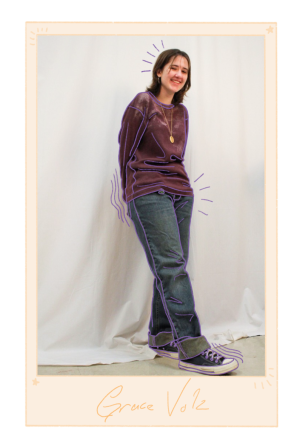
In the shadow of a tall looming door, she stares up into rows of jeans, slacks, jackets and an assortment of shirts and ties — her dad’s closet. Grace Volz, freshman, said the closet was a game-changer, and a lot of her current clothes are from there.
Volz came out before her eighth-grade year and she began to experiment with clothing. Since then she has continued to experiment. Volz said quarantine gave her time to understand what she felt most confident and comfortable wearing.
“After coming out, I felt a sense of confidence,” Volz said. “I started dressing the way that I wanted to and acting the way that I wanted to.”
Volz is gender fluid and uses any pronouns. She said she tries not to connect gender with clothing because it can be confusing. Though she started to understand her sexuality and clothing preferences during COVID-19, gender is still a work in progress.
“I just decided to wear what I wanted to wear and [took] out gender entirely,” Volz said. “I am gender fluid, so when I’m in the mood to wear something a bit more masculine, I wear it. And when I want to wear something more feminine, I wear it.”
For some people, like Volz, fashion is a form of self expression. It can say a lot about a person, which is what Volz said she enjoys about it.
“[My style is] just an extension of my personality,” Volz said. “I can express myself in a way that I don’t have to say [it].”
Your donation will support the student journalists of Kirkwood High School. Your contribution will allow us to purchase equipment and cover our annual website hosting costs.

she/her
Hobbies and Interests: Reading, hanging out with friends, and Netflix.
Favorite Song: I don't have a favorite song, but my favorite artist...

She/Her
Hobbies and Interests: photography, piano, hiking, reading
Favorite song: New Year's Day by Taylor Swift
Favorite Quote: "To define...

she/her
Hobbies and Interests: Drawing, making new spotify playlists, watching good movies, being outside, traveling!!
Favorite Song: (currently)...



